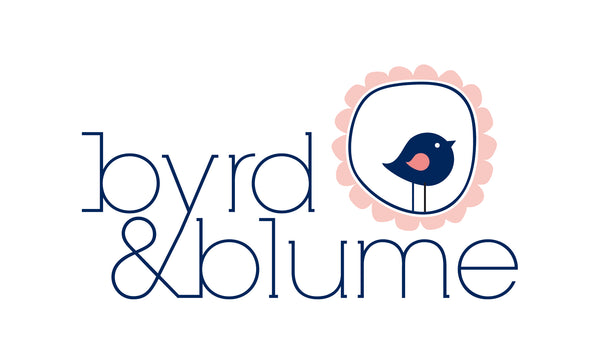The science behind your babies vision
The science behind Byrd & Blume's gorgeous new playmat
Beautifully designed. Purposefully developed.
At Byrd & Blume, we believe every moment of play is an opportunity for growth.
Our reversible sensory playmats are not only crafted to look beautiful in your home — they’re designed through the lens of baby development science, supporting vision, coordination, and exploration from the very first days.
https://youtu.be/iZjeAfHXBQs

👶 Understanding Your Baby’s Senses
From the moment your baby is born, their world looks very different from yours.
A newborn’s eyes can only see 20–30 cm — just enough to focus on your face during cuddles. Their retina and colour receptors are still developing, so bold patterns and high contrast are what capture their attention most.
As the months go by, their visual and sensory world expands:
| Baby Age | What They See | What Helps Development |
|---|---|---|
| 0–3 months | Blurred shapes, black & white contrast | Bold patterns, clear edges, close-up interaction |
| 4–6 months | Emerging depth and colour perception | Gentle colour transitions, repeating shapes |
| 6–12 months | Clearer detail, stronger coordination | Textures to touch, patterns that invite movement |
Every design choice in our playmats has been made with this journey in mind.
🌀 Design That Supports Discovery
Our 100 cm circular playmat is intentionally structured to grow with your baby — from tummy time to crawling to play.
Each detail is deliberate:
- Segmented quilting pattern – 8 cm segments with 1 cm spacing create subtle texture and symmetry that attract a baby’s attention and support tactile exploration.
- Reversible design – One side in high-contrast monochrome spots to engage newborn vision, the other in our signature light sage green & gray, offering calm as vision and colour sensitivity mature.
- Circular form – Encourages 360° movement, letting baby roll, stretch, and explore freely in every direction.
- Soft-touch, OEKO-TEX® certified cotton – Safe on delicate skin, breathable, and designed for easy care.
- Responsibly made – A leading manufacturer of sustainable textiles since 1965.
Every curve, stitch, and shade has a purpose: to create a sensory environment that evolves with your child.
🔬 The Science Behind Our Design
Our design philosophy is rooted in the latest understanding of infant visual and sensory development.
Research shows that:
- Newborns are most responsive to high-contrast black-and-white patterns (Fantz 1963; Adams & Maurer 1982).
- As their brains grow, exposure to simple geometric repetition helps strengthen neural pathways associated with focus and pattern recognition.
- Tactile variation — seams, quilting, and texture — promotes early sensory processing and spatial awareness.
We’ve translated these findings into real-world design: patterns that stimulate without overwhelming, colour transitions that support calm exploration, and textures that reward curiosity.
🌱 Safety, Sustainability & Craftsmanship
Every Byrd & Blume product is made with safe, certified materials and ethical production practices.
Our textiles are independently tested to meet OEKO-TEX Standard 100, meaning they’re free from harmful substances and gentle on baby skin.
Our manufacturing partner has over half a century of experience creating high-quality sustainable fabrics — ensuring durability, softness, and environmental responsibility in every stitch.
💗 For Parents, Too
We know that baby products have to work beautifully for you as well as your little one.
That’s why our playmats are machine washable, lightweight, and stylish enough to leave out all day.
They blend seamlessly into your home while providing a development-rich space your baby will love.
✨ Design That Grows With Your Baby
From those first black-and-white gazes to crawling adventures and quiet moments, the Byrd & Blume sensory playmat supports every stage of discovery — with science, safety, and beauty at its heart.
References
(For parents who want to dive deeper)
- Fantz, R. L. (1963). Pattern vision in newborn infants. Science, 140(3564), 296–297.
- Adams, R. J., & Maurer, D. (1982). The development of high spatial frequency sensitivity. Vision Research, 22(11), 1329–1339.
- Bremner, J. G., & Slater, A. (2011). Theories of Infant Development. Wiley-Blackwell.
- Gottlieb, G. (2007). Probabilistic epigenesis. Developmental Science, 10(1), 1–11.
Join the Byrd & Blume Family
Be the first to hear about new sensory designs, developmental tips, and exclusive offers.
